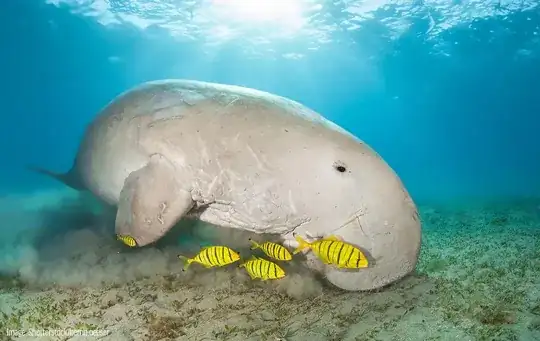Your timescale seems pretty brief, but might be doable. Australopithicines diverged from the rest of the hominins about five to eight million years ago. Looking at the evolution of cetaceans, five million years is enough time to get from something that's basically a land-dwelling mammal that can dive for food to an obligate aquatic and unambiguously whale-like animal with all of the major physiological changes along the way that would require. Similarly, the ancestors of modern seals evolved from an otter-like Puijila to a very seal-like Pteronarctos over a similar timescale, though the changes weren't quite as dramatic as those that whales underwent.
Note though that the immediate predecessors to seals and whales were things already adapted to swimming and hunting in water. Proto-humans seem to have arisen and lived in quite different environments, which adds a non-trivial barrier in the way of the changes you'd like.
are a grayish seal like color
Seals are all different colours, both in terms of skin and fur. Cetaceans are also varied in colour. You can hand wave whatever colour you feel like, I'm sure.
have a thick layer of blubber
Seems fine... whales and seals independently evolved this from a land-dwelling mammalian predecessor, so it seems plausible that it could happen here, too.
have human level intelligence
That seems entirely like handwavium at this point, as only one species exhibits human-level intelligence and other intelligent humanoids are all dead, possibly as a result of the action of the direct ancestors of modern humans. You're the author though, so have at it.
have webbed hands and feet
Fine. Note though that there aren't a whole lot of diving predators who use their forelimbs for catching prey; those arms are not at all hydrodynamic and will impede their owner's ability to hunt. They make more sense in generalists, especially tool-using ones
have some type of echolocation (but can communicate like humans)
Dubious. Echolocation seems to have taken longer than 5 million years to arise in cetaceans, and required a lot of complex and specialised physiological changes. I think this is probably the least plausible thing you've requested (after human-level intelligence, perhaps) and it would be more likely that they've just got good underwater hearing, eyesight and other useful sensory modalities that aren't wildly different from their ancestors.
have sharp teeth (being carnivorous)
The forebears of seals and whales were already predators. The forebears of australopithecus, not so much. Human (and hominin) dentition and digestive systems seem best suited to an omnivorous lifestyle. Perhaps this, too, could have changed over time, but it doesn't seem entirely necessary and does seem a bit dubious. There's reasonable non-meat-based eating to be had around the shoreline, both above and below, especially for clever species.
have slit like noses (lacking a sense of smell)
Seals still generally have a good sense of smell on land. Remember that smell and taste are difficult to disentangle, and having a good sense of taste is handy for distinguishing toxic or otherwise unhealthy food from the good stuff.
thighs have started to fused
Seems fine.
can hold their breath for up to 20 minutes (but still need to resurface for air)
Also seems fine. Remember that breath holding times in marine mammals are related to the depth they need to dive to hunt. Deep dives require longer breath holds, but also substantially different respiratory physiology, not to mention the difficulty of locating and dispatching prey in deeper, darker water. Plenty of seals and other diving predators (like penguins) dive for only ten minutes or less, because that's all they really need. Still, longer dives don't seem unreasonable, so there's no reason you couldn't have them too.
As an example of a real-world primate that has some early adaptations to the water and can dive and swim, have a look at proboscis monkeys. They don't hunt or forage underwater, but eat fruit and leaves from trees near the water and use water as a handy escape route and take advantage of the open space is provides for group social interactions.
